

E13A1 Jake
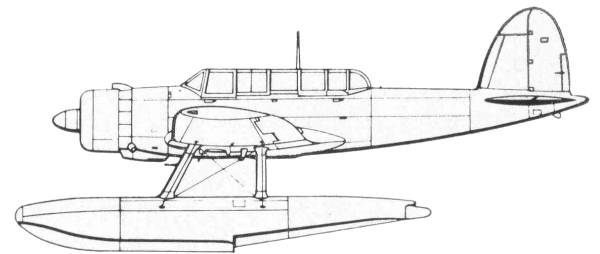
The Aichi E13A1 "Jake" was manufactured in larger
numbers than any other Japanese floatplane. It was built to a 12-Shi
specification issued in 1937 calling for a high performance three seat
reconnaissance aircraft suitable for use from both catapults and shore
bases. The first prototype was flown in 1938. Aichi's design, known as
the AM-19, was accepted for production in December of 1940. It was of
all metal construction and was powered by a 1,080 h.p. radial engine.
E13A1 floatplanes operating from the cruisers Chikuma, Kinugasa and
Tone supplied the information concerning the disposition of the U.S.
Pacific Fleet in Pearl Harbor on which the J.N.A.F. acted for its
surprise attack on the naval base and made the first contact with the
U.S. naval forces in the Coral Sea and Midway battles. Aichi only
produced 133 of the E13A1's due to the need to concentrate on the
production of the D3A and D4Y dive bombers and production was
transferred to Kyushu (Watanabe) who produced 1,127 and the Naval Air
Arsenal at Hiro who built approximately 90 more. A modified version
appeared in 1944 the E13A1a had different radio equipment and a
principal change to the floats that had two additional pairs of inward
sloping struts and many of the bracing wires were eliminated. At the
same time another version was introduced, the E13A1b which was equipped
with airborne search radar. Several modified versions of the A1a and
A1b were also introduced including a night reconnaissance model with
flame dampers on the exhausts, an anti-submarine version with magnetic
anomaly detection gear and an anti-patrol boat version with a flexible
20 mm. cannon mounted to fire from the fuselage belly. The E13A1 was
extremely popular with its crews who preferred it to the more powerful
Zui-un and among the tasks performed by this floatplane in addition to
its primary role of reconnaissance were air-sea rescue, liaison, coastal
patrol, convoy escort and shipping attack. It remained in active service
throughout the Pacific war.
The Kit

The
Nichimo kit comes in a top open two part box with nicely done
art work
on the top. Inside the box are two bags containing all the
parts. The
parts are molded in a medium gray plastic and feature raised
detail,
mostly in the form of rivets. The rivets are about the same
size as
those seen on older 1/72 scale kits but I'm sure they are
still a bit
over sized. There was some light flash on the large parts but
the
smaller parts seemed to have a lot more along with the usual
parting
lines. Many of he parts on my kit had come loose from their
sprues. My
kit was pot marked with sink marks, primarily where there were
locator
pins or sockets molded into the opposite side. There was one
on each
side of the fuselage just below the wing trailing edge, on
both top and
bottom halves of the inner wing sections and some lighter ones
on the
wing outer sections. These are problematic if you want to
retain the
existing rivet detail, otherwise no worse than on any other
kit.
The flight control surfaces including the flaps are separate pieces and have very light renditions for the fabric surfaces. The wings have a sturdy mechanism that allows the wings to be folded if desired.The kit has only the barest amount of interior detail and what is there is compromised due to the fact that the kit was originally intended to have a prop spinning motor and the cockpit needed to be made very shallow to accommodate the battery and motor. Note that the motor is not included on newer releases of the kit. Crew figures are included but they are very out of scale as one of the photos below will illustrate. The kit comes with a beaching dolly to display the model. It also comes with two bombs. Altogether there are 80 parts by my count in gray. The clear parts are a bit thick and mine had some scratches due to being bagged with the rest of the parts but were reasonably clear. The canopy is in two pieces with the rear gunners position being separate. altogether there are three clear parts for a grand total of 83 parts. See photos below.




This shot illustrates how out of scale the figures provided in the kit are.



The decals include marking for two aircraft with the only difference being the tail number. The decals appear thin to the point of being translucent and the set in my kit was badly out of register. There is no stenciling included but the wing leading edge segments in yellow and various other stripes are include but I wouldn't recommend using them. See below.
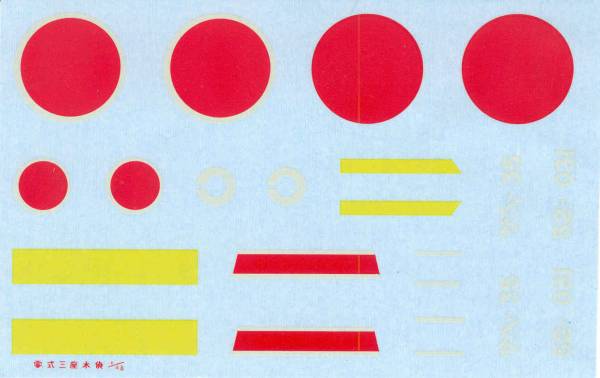
The instructions are on a long sheet that was folded to fit the box. The folds don't correspond to the division of the assembly instructions and the instructions are oriented down the long direction of the page much line Japanese text is done. Included on all this is a brief history, a parts map, assembly instructions and one panel with painting and decal instructions. Colors are described by name only and there is a photo of the completed model.
After Market Goodies
It's a shame that this relatively important aircraft has not been given more attention and a better kit state of the art kit from Hasegawa or Tamiya in this scale would be most welcome. Unfortunately this is all we have now. Lone Star makes a set for this kit that should do wonders for it. A couple notes before I review this set. I have acquired a number of sets from Mike at Lone Star over the years and if one thing has been a constant it that the quality of the castings in variable. Some parts look like what you get from top of the line producers and others more like what mine would look like if I did them. So it's sort of a crap shoot as far as quality goes. While I may be a bit over critical in some places I still applaud Mark for producing stuff like this as without it building a nice version of the Jake would require a lot of scratch building. So let's see what Lone Star has given us to work with. First up you get two replacement fuselage halves. These are cast in a cream color resin. They feature the same sort of raised detail as the kit does which is a mixed blessing as some of it will undoubtedly be destroyed in the clean up and assembly process. The up side is that if you don't want to there is no need to rescribe the entire model. The surface isn't as smooth as the plastic in the kit but I doubt it will be that noticeable once a coat of primer is used. As you can see there are some air bubbles in the casting. The ones towards the forward end are mostly internal and only two of the smaller ones are actually open to the surface. The casting is quite thin in that area and it would be a good idea the reinforce this area with some epoxy, super glue or perhaps Milliput. The other surface bubbles can be fixed using your favorite fillers.
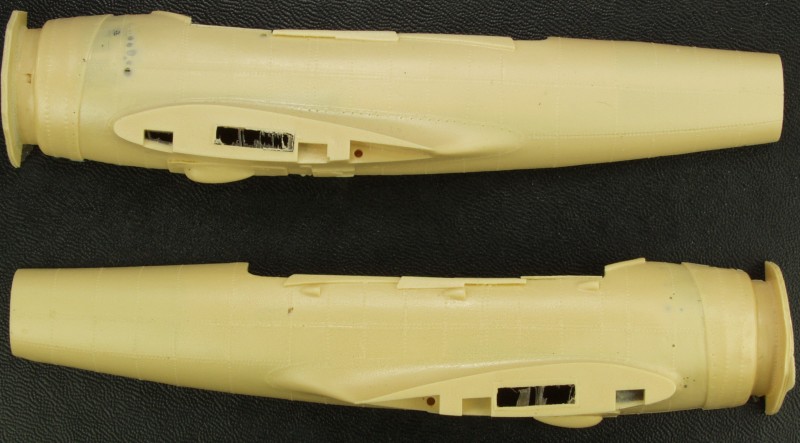
On the inside is a real treat. Both sides are loaded with nice detail, on the starboard side both aircraft structure and other detail such as heating duct, black boxes, a stowed machine gun are featured. The area is void of any bubbles, at least on my set. The port side features similar structure plus ammo cans oxygen bottles, a map case, trailing wire antenna reel and some wiring harness. It also has some voids or short shots, one of the ammo cans and two of the oxygen tanks plus a few pin holes. All fixable but irritating none the less.

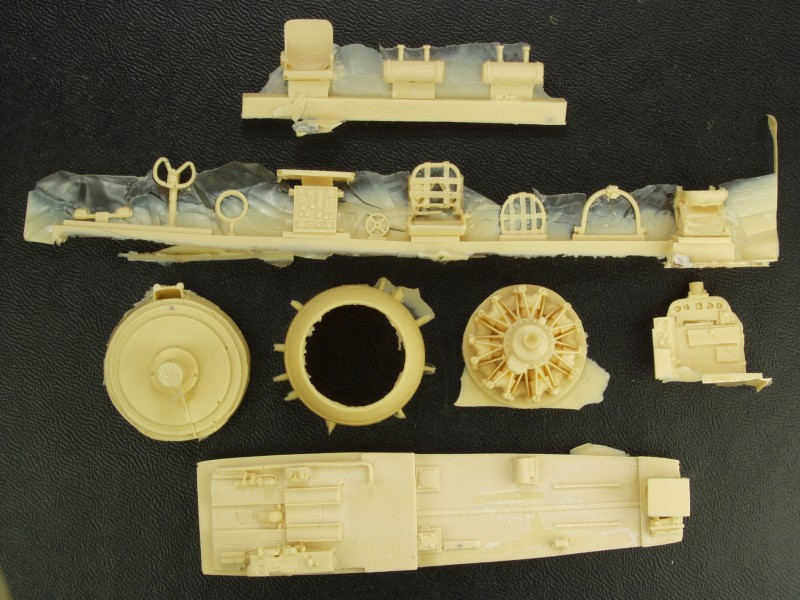
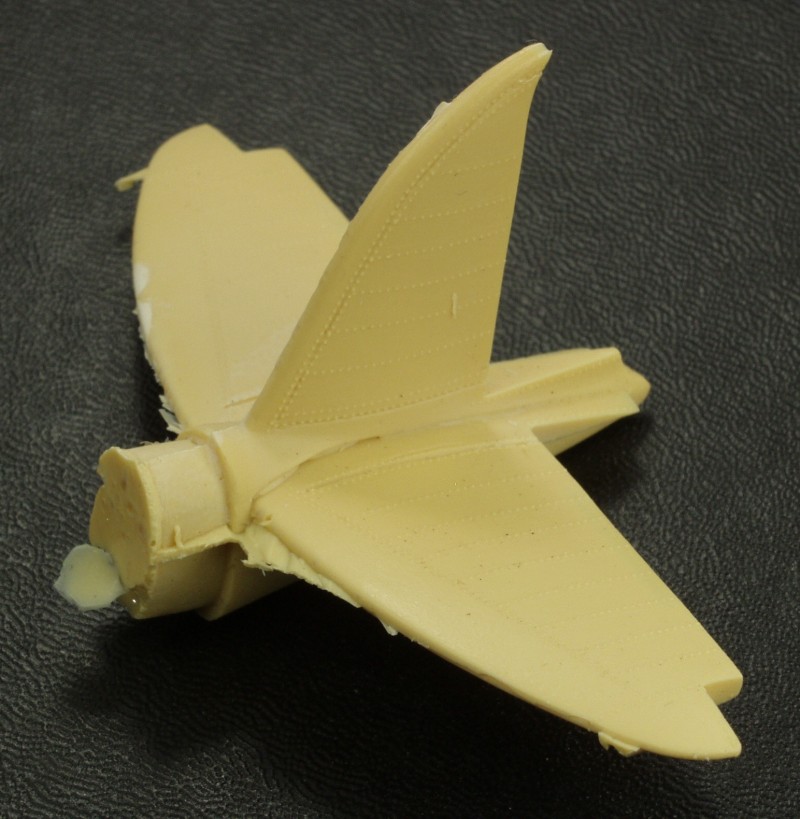
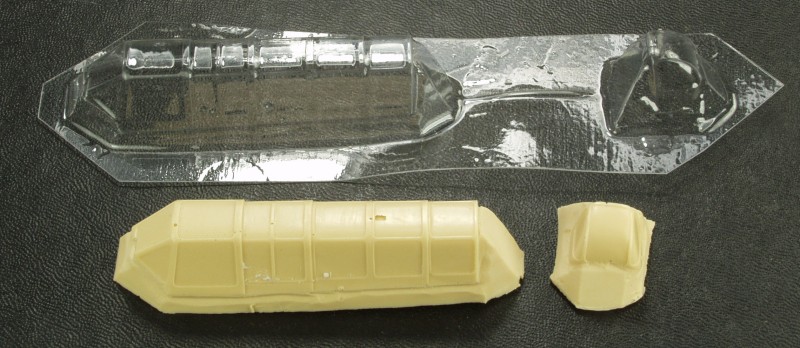
Conclusions
This kit should be a challenge. The surface detail will most likely need to be redone either by scribing or using a rivet wheel. As a basic kit it should not provide any great challenge for most modelers but could require more skill if you wish to correct some of its inherent short comings. Unfortunately if you want a Jake in 1/48 its the only game in town.
Links to kit build or reviews
A review and build can be found here.
References
War Planes of the Second World War, Volume 6, Floatplanes by William Green
Updated 8/8/18